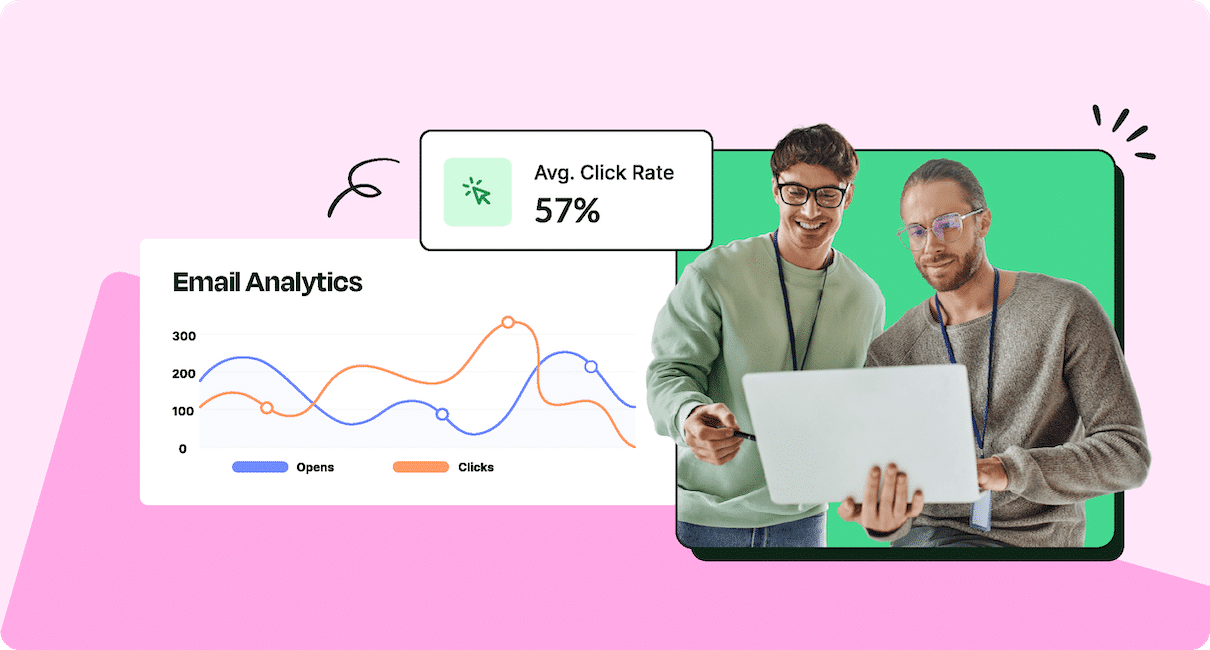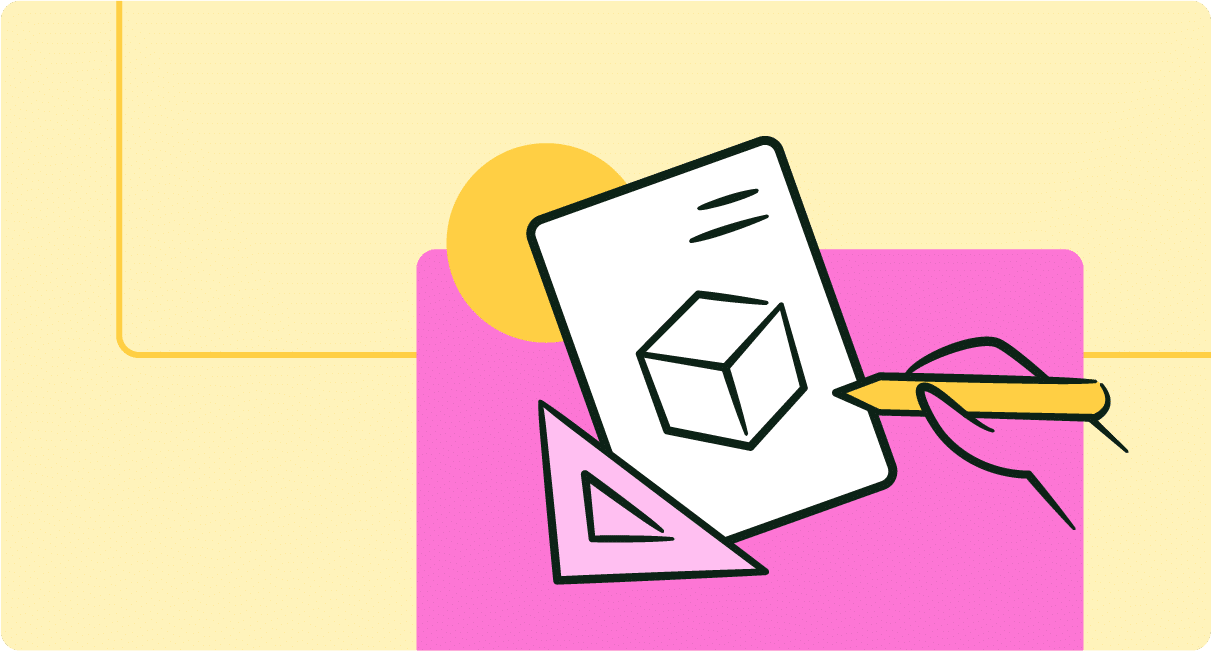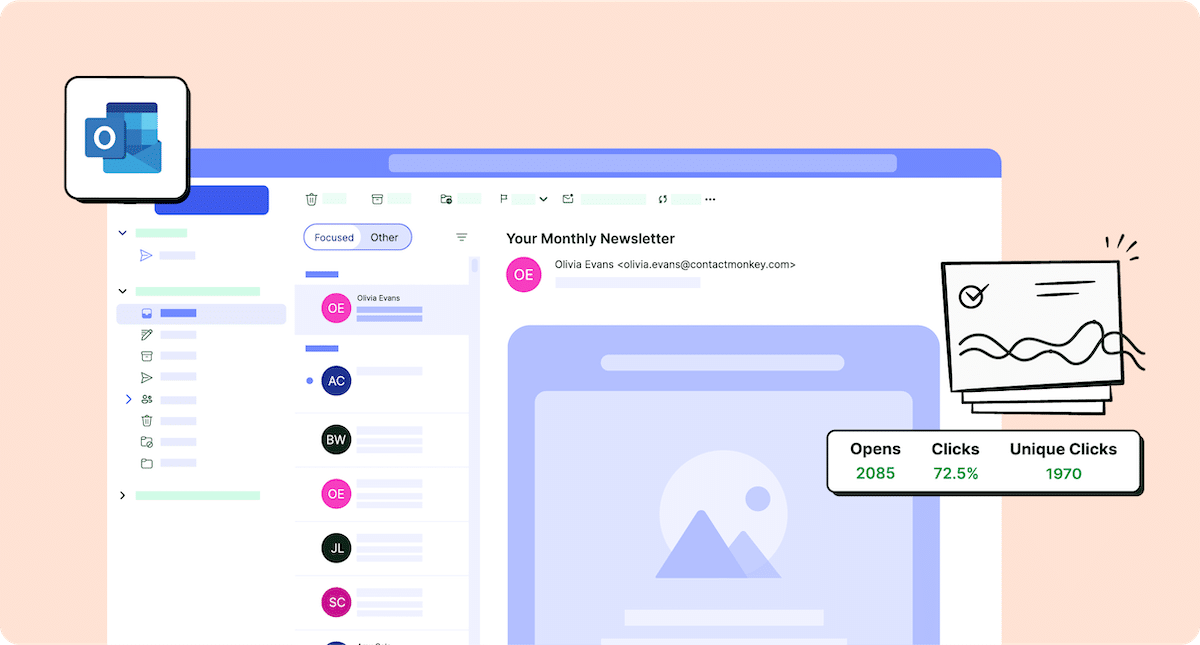With insights gained from internal email analytics, communicators blend the art of communication with the science of data analytics for maximum-impact emails and newsletters. That’s why collecting internal communication email metrics should be a key part of every internal comms strategy.
Experienced internal communicators have great instincts for what makes a winning communication strategy. However, even the most savvy communicator can benefit from a transparent look into how their employee communications perform. This is where internal email tracking and analytics come in.
Internal email data analytics allow communicators to collect email tracking data to gain valuable insights about employee engagement with internal communication emails. These metrics help them understand their communications’ strengths and weaknesses, refine their strategies, and demonstrate the impact of their efforts to leaders and other stakeholders.
In this post, we’ll explore how to measure internal email engagement and metrics and how these metrics improve your internal communication performance. This is a key step that should be part of your overall internal email checklist.
Are you ready to see this important feature of ContactMonkey’s internal email platform put into action?
See how ContactMonkey’s analytics features make it easy to see employee engagement with internal emails, newsletters, and surveys.
Take a self-guided tour of ContactMonkey
See how our key features can streamline your internal communications.
Take product tour

What Does Internal Email Analytics Mean?
Internal email analytics is the practice of tracking and analyzing both the data and metrics of the emails you bulk send to employees. These metrics include email open rates, click-through rates, time and location of email opens, and more. By collecting and analyzing internal email analytics, communicators get important insights into how employee emails are performing. Attention to analytics is essential to the success of your overall internal email strategy.
To get started with employee email analytics communicators typically use third-party employee email tools like ContactMonkey. These internal email analytics tools offer robust tracking capabilities and provide a user-friendly analytics dashboard for visualizing the data they collect.
ContactMonkey helps users collect advanced internal email analytics that go beyond basic open and click rates to provide a deeper understanding of employee behavior. This helps communicators tailor their outreach strategies for maximum impact. By leveraging real engagement data and internal email reports, communicators can refine their approaches and ensure that employees engage with the crucial emails they receive.
6 Reasons to Track Internal Email Analytics as an Internal Communicator
For communicators using basic email platforms like Gmail or Microsoft Outlook, email analytics can be a game changer.
Internal email analytics help you:
1. better understand your current employee engagement levels
One of the primary benefits of internal email analytics is being able to understand the state of employee engagement at your company. By tracking metrics for internal emails such as open rates and click-through rates, you gain valuable insights into what is and isn’t working with your copy and your internal email templates. This arms you with powerful information to make strategic changes accordingly.
Get powerful email analytics and reporting features
Know exactly who is opening and engaging with your employee communications and company newsletters.
Explore analytics & reporting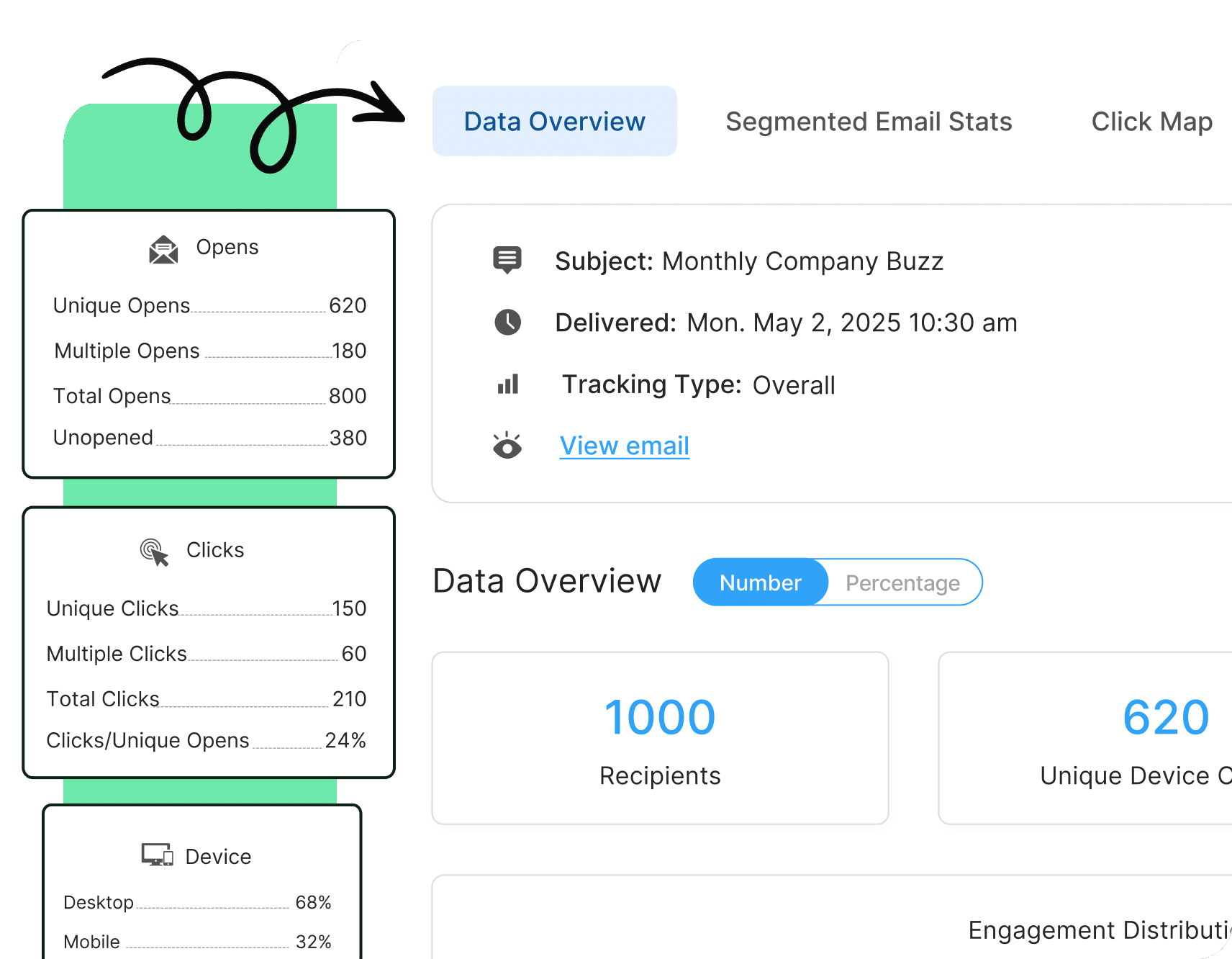
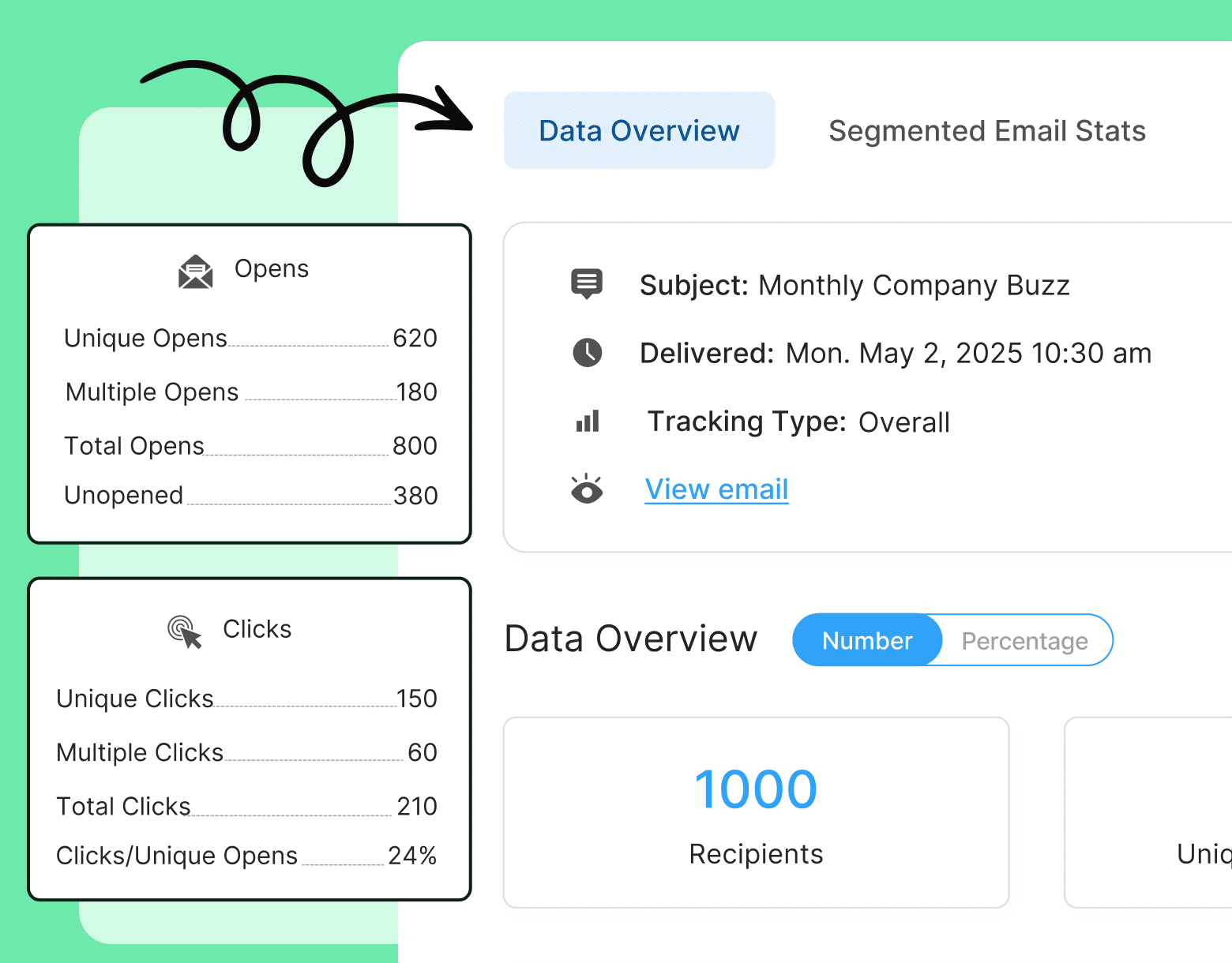
What this looks like in practice:
Imagine you sent out a newsletter that included a registration link to a skill-building event, but got hardly any registrations.
Without tracking, you’d wonder why, but be left without a clear sense of how to encourage registrations. On the flip side, using an internal email analytics platform like ContactMonkey gives you visibility into exactly what’s happening with those emails.
Are employees simply not opening the initial newsletter? Opening it but not spending a lot of time reading internal emails? Either possibility suggests potential improvements for the next internal email.
Maybe they’re actually engaging, even clicking other links in the newsletter, but still not registering for the event. In that case, a click map of your email would give you a better sense of why your messaging isn’t landing.
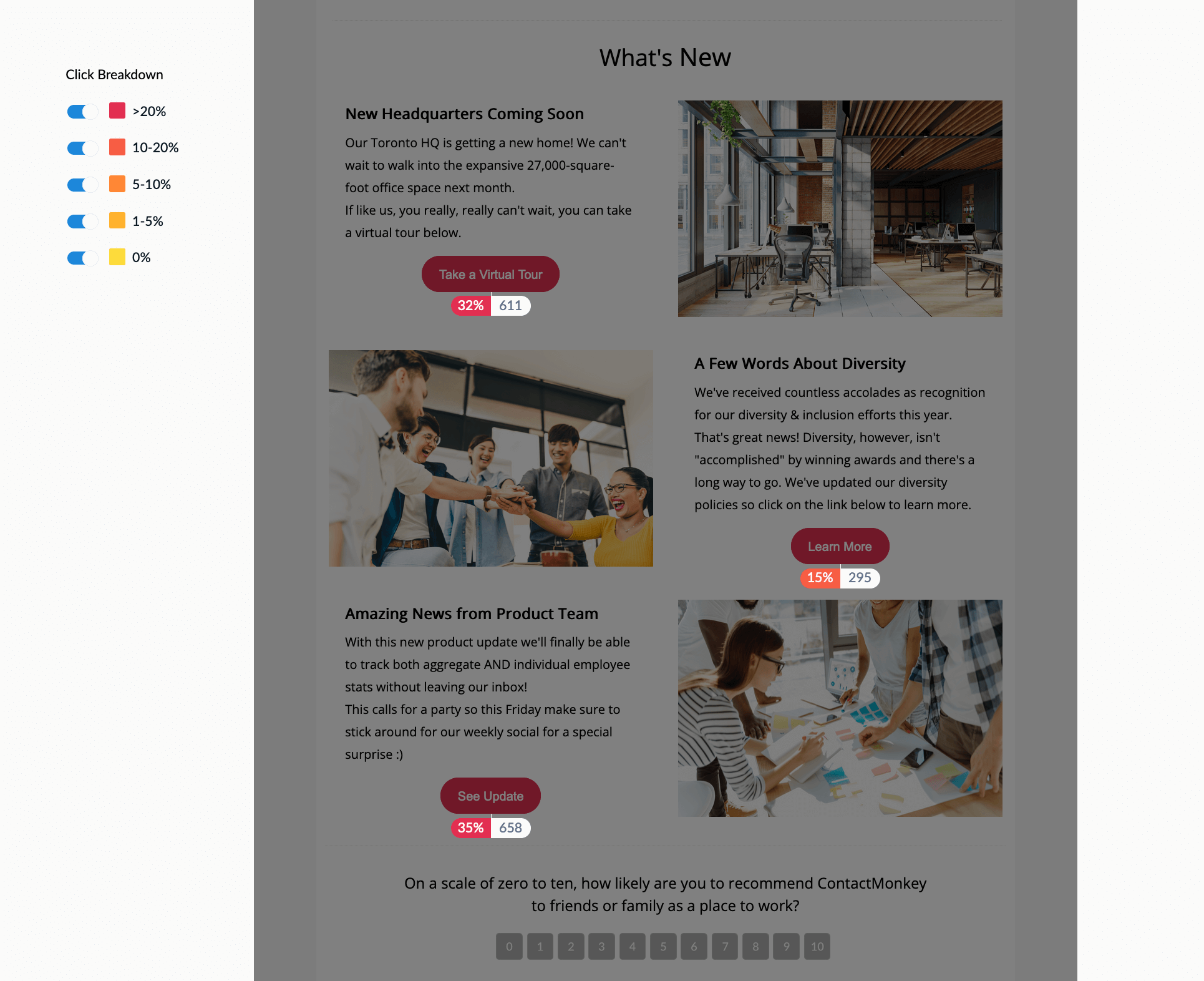
Click maps superimpose the click rate for each link in an email onto the email itself. Seeing the internal email analytics directly on the email design helps you hone in on what aspects of the email might not be working. Learn more on why you must improve internal email design to improve overall performance of your internal comms. If one link is getting a lot more engagement than another, you can see the differences in how they’re presented and make changes accordingly.
In this case, you can see that the RSVP button is getting significantly more interaction. It’s possible that the prominent, colourful button is attracting more attention, or that “RSVP” is more informative button text than “Learn more”. Changing the registration link accordingly in the following newsletter may help that link get more attention from employees. (And if not, the data you collect after you make those changes may suggest further solutions to try!)
2. Understand and optimize your communication strategy performance on the fly
Once you’ve identified areas of your communications that need improvement and made a plan to make changes to your strategy, you still need to be able to measure the effectiveness of these changes. Measurement is never one-and-done– collecting internal communication email metrics should be part of every internal communicator’s ongoing strategy.
By continuously collecting and analyzing data, you can determine the effectiveness of your strategies over time. Plus, if a strategy that used to work stops being effective, continuous tracking helps you notice the drop-off quickly, so you can course correct on the fly rather than wasting effort on a strategy with diminishing returns.
What this looks like in practice:
Let’s say you increase the frequency of your employee newsletter from monthly to weekly. For several months, you see more employees opening and interacting with the emails than ever before, with plenty of positive feedback from both employees and higher-ups. However, after a few months, your internal email newsletter analytics reveal a drop-off in interaction with the emails.
Without tracking, it might be a long time before you notice the problem! But looking at an internal email analytics dashboard, you can quickly deploy changes to fix the situation.
It’s possible a weekly newsletter is too frequent and biweekly works better for employees. Or maybe your subject lines aren’t distinctive enough for employees to notice the newsletter in their inbox.
Whatever the case, by regularly collecting and analyzing employee email analytics, you can test the changes you make and implement the ones that perform best into your future communications. In this way, internal email campaign analytics help you create a killer internal communication plan full of proven ways to cut through the inbox clutter.
Learn how to leverage analytics with email surveys – these are the best ways to use surveys in emails to gather valuable employee feedback.
Watch ContactMonkey LIVE in action
Join live demo

3. Set realistic comms engagement goals based on current performance
Internal communication email metrics don’t just describe the present, they help you plan for the future.
To set reasonable internal communication goals, you need to understand your starting point. That way, you can focus on the areas that need improvement and understand how much improvement you can reasonably expect or aim for.
With historic tracking data, you can set strategic goals based on actual email performance.
What this looks like in practice:
Let’s say you’re trying to set your key performance indicators (KPIs) for the year and are consulting your latest internal communication email metrics to help you set your goals. You find out that your email click-to-open rate has been steady at 15% for the year, but sometime over the last quarter, your average open rate dropped from 70% all the way down to 59%. Seeing that, you’d likely want to prioritize bringing the open rate back up!
And when deciding what open rate to aim for, you’ll know what is and isn’t possible. Sure, an open rate of 95% would be great! But if it’s vastly more engagement than your emails have ever seen, you’re setting yourself up for failure if you make it your goal. A more realistic aim for the year might be to boost opens to your previous 70% average. You could even aim for a 72% or 73% open rate if you were feeling ambitious.
4. Determine best email send times and days for your employees
Best sending times differ between industries. In 2024, communicators in the legal industry saw the most engagement from emails sent on Wednesdays and Fridays between 9 and 11 AM. In the construction industry, Thursdays and Saturdays between 10 AM and 12 PM were by far preferred. Knowing the specific best sending times for your industry can help you boost engagement without changing anything else about your communications.
Even better is knowing the best sending times for your specific company.
Internal email campaign analytics help you decide when to send employee emails. By analyzing open times and engagement patterns, you can optimize the timing of your emails to be seen by the greatest number of employees.
When you send an email using ContactMonkey, you’ll see an open and click distribution timeline on your internal email analytics dashboard. By tracking when employees open and click emails, you get a better idea of the best time to send. You also can view side-by-side email campaign comparisons to see how time of day and day of the week affect your open and click rates.
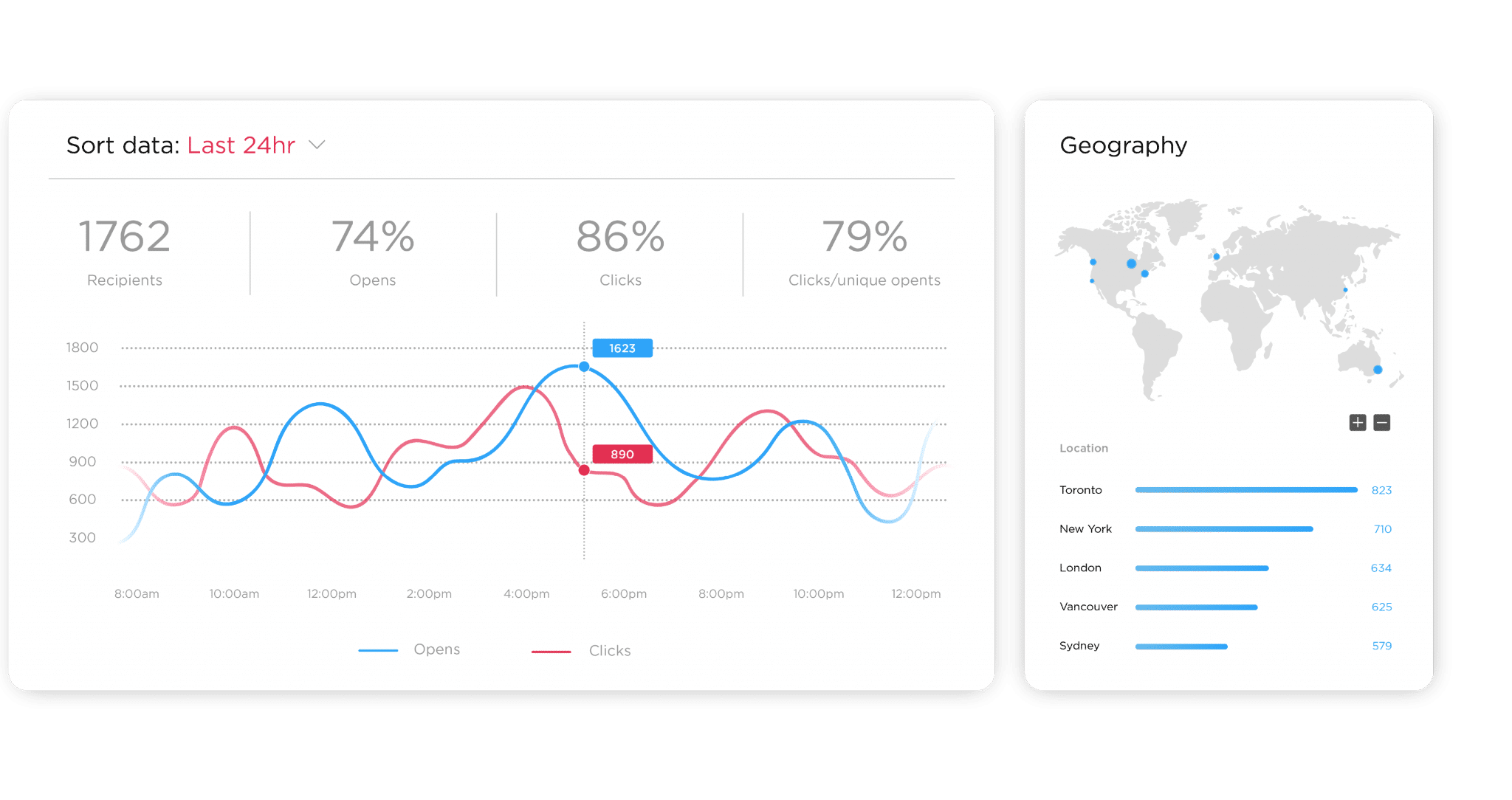
Open times can also help you figure out when you’re most likely to get a response to a time-sensitive query. If there’s an urgent message to be sent out, it might be a useful tradeoff to schedule it for a time you know some employees will open it right away, rather than aiming for the maximum number of eyes on your communications.
5. Prove internal communications ROI to leaders and stakeholders
One of the biggest challenges for internal communicators is demonstrating the impact of their efforts to leaders and stakeholders.
Internal email campaign analytics help you demonstrate the quantitative value of your comms, whether through showing a lack of employee engagement that needs urgent addressing or by showing improvement over time as you implement new internal communication strategies. With internal email tracking and analytics, communicators can justify their budget and make a compelling case for additional resources.
Investing in the best internal email analytics tools is thus not only helpful for your work as a communicator, but it also helps justify its own existence.


6. Keep tabs on a crucial communication channel
Why track email metrics at all?
Here’s the thing: despite the proliferation of other internal email platforms and tools for your employee communications, email is still the most used internal communication channel out there.
In fact, according to ContactMonkey’s 2024 Global State of Internal Communications Survey Report, 45% of communicators report relying the most on email for their internal communications, and 91% of communicators report relying more on email in a hybrid or remote environment.
With numbers like that, any employee comms tracking strategy that doesn’t include internal email tracking and analytics isn’t going to capture the full picture. By focusing on employee email analytics, you can align your efforts with the most widely used communication channel in your organization.
Supplement Your Internal Email Analytics With Industry-Specific Benchmarks
To make the most of your internal email analytics, start by setting benchmarks based on your historical data. But what if you’re new to collecting analytics? External industry benchmarks can help.
These benchmarks provide a reference point for your performance before you have your own data. They also allow you to compare your metrics with other companies in your industry, providing valuable context.
Set data-informed goals for your internal email analytics
General benchmarks are better than nothing, but they’re not always accurate enough to be useful.
For example, while the average email open rate across all industries in 2023 was 69%, the Consulting industry had an average open rate of 79%, while Media & Entertainment had 57%. For communicators in those industries, using the overall average of 69% as a goal-setting benchmark would be extremely unambitious on the one hand and way too ambitious on the other
Internal communication email metrics vary wildly between industries, so you should always compare your numbers to industry benchmarks for a more accurate understanding of your performance.
Want to incorporate industry-specific internal email benchmarks into your comms goal-setting? Check out our 2025 Internal Email Benchmark Report for in-depth benchmarks for the year, including detailed metrics for 20 top industries!
Want to take your analytics skills further? Check out this guide to best practices for internal email analytics and optimization.
Build a Data-Informed Internal Communication Plan With an Internal Email Analytics Platform
Internal email analytics offer a powerful means for communicators to supplement their knowledge with real-time data they can use to build better strategies and achieve greater impact. Yet many communicators continue to make do without dedicated internal email analytics software, instead sticking to standard email platforms like Outlook or Gmail.
Luckily, solutions exist to help communicators get the best of both worlds. For communicators looking to collect internal email analytics for Outlook or Gmail, ContactMonkey is one of the leading internal email analytics tools. ContactMonkey integrates directly into your inbox so that you can start collecting tracking data without missing a beat.
Ready to take your internal communication strategies to the next level? Book a free demo of ContactMonkey today and see how our internal email analytics platform can help you build a more effective and data-informed communication plan.

